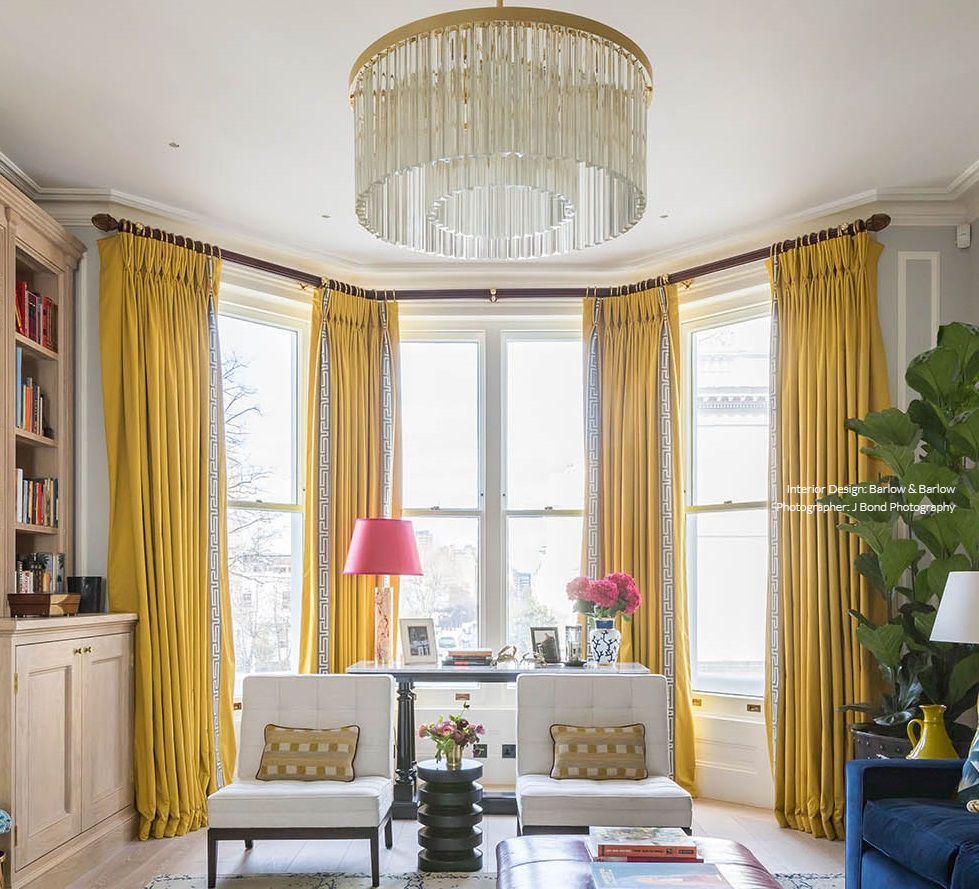The Rise Of Wabi-Sabi Curtains: Finding Beauty In Imperfection
- Pat Giddens

- Oct 21
- 3 min read
Updated: 3 days ago

In an age of polished perfection and algorithmic aesthetics, a quieter, more contemplative design movement is taking hold in British homes. The latest expression of it can be found not in furniture or architecture — but in curtains.
The wabi-sabi curtain trend, inspired by the Japanese philosophy that celebrates imperfection and impermanence, has emerged as one of 2025’s most intriguing interior directions.
A Philosophy Woven into Fabric
Rooted in centuries-old Japanese thought, wabi-sabi embraces simplicity, weathered textures and the quiet dignity of the handmade. Translated into home design, it means valuing natural materials, subtle irregularities and a sense of calm authenticity over the flawless or mass-produced.
In practice, wabi-sabi curtains favour natural fabrics such as linen, cotton and hemp, often in undyed or softly muted tones — flax, clay, oyster, smoke or stone. Edges may be raw, seams hand-finished rather than machine-precise, and the drape deliberately relaxed rather than stiffly structured.
“Wabi-Sabi curtain styles are a beautifully underexplored niche,” says curtain maker Pat Giddens, “and they align perfectly with the growing desire for grounded, tactile, and soulfully imperfect interiors.
A Counterpoint to Perfection
The aesthetic is emerging as a subtle rebellion against the glossy minimalism of the past decade. After years of white-on-white interiors and overly curated spaces, homeowners are seeking warmth, depth and texture — interiors that feel lived-in rather than staged.
The wabi-sabi sensibility also dovetails neatly with growing interest in sustainability. By celebrating longevity, visible wear and repurposed materials, it encourages a slower, more conscious approach to decorating.
How to Introduce Wabi-Sabi into Your Home
Adopting the look doesn’t require a full redesign. In fact, restraint is key.
Choose authenticity: Prioritise natural fibres over synthetics. Linen and cotton provide the right weight and texture.
Keep the palette muted: Earth tones and natural whites create harmony with light and shadow.
Opt for simplicity in hardware: Wooden or aged metal rods complement the material honesty.
Embrace imperfection: Let the fabric drape naturally, even pool slightly on the floor — a soft, effortless elegance.
An Enduring Calm
While some may see wabi-sabi curtains as merely a passing fashion, their philosophical underpinnings suggest something more lasting. As our homes evolve into spaces of reflection and respite, the appeal of the imperfect — of texture, warmth, and quiet restraint — feels profoundly timely.
After all, as Giddens notes, “Wabi-sabi is not just a style — it’s a mindset. It’s about allowing space for the human hand, and the poetry of imperfection.”In an age of polished perfection and algorithmic aesthetics, a quieter, more contemplative design movement is taking hold in British homes. The latest expression of it can be found not in furniture or architecture — but in curtains.
The wabi-sabi curtain trend, inspired by the Japanese philosophy that celebrates imperfection and impermanence, has emerged as one of 2025’s most intriguing interior directions.
A Philosophy Woven into Fabric
Rooted in centuries-old Japanese thought, wabi-sabi embraces simplicity, weathered textures and the quiet dignity of the handmade. Translated into home design, it means valuing natural materials, subtle irregularities and a sense of calm authenticity over the flawless or mass-produced.
In practice, wabi-sabi curtains favour natural fabrics such as linen, cotton and hemp, often in undyed or softly muted tones — flax, clay, oyster, smoke or stone. Edges may be raw, seams hand-finished rather than machine-precise, and the drape deliberately relaxed rather than stiffly structured.
“Wabi-Sabi curtain styles are a beautifully underexplored niche,” says curtain maker Pat Giddens, “and they align perfectly with the growing desire for grounded, tactile, and soulfully imperfect interiors.
A Counterpoint to Perfection
The aesthetic is emerging as a subtle rebellion against the glossy minimalism of the past decade. After years of white-on-white interiors and overly curated spaces, homeowners are seeking warmth, depth and texture — interiors that feel lived-in rather than staged.
The wabi-sabi sensibility also dovetails neatly with growing interest in sustainability. By celebrating longevity, visible wear and repurposed materials, it encourages a slower, more conscious approach to decorating.
How to Introduce Wabi-Sabi into Your Home
Adopting the look doesn’t require a full redesign. In fact, restraint is key.
Choose authenticity: Prioritise natural fibres over synthetics. Linen and cotton provide the right weight and texture.
Keep the palette muted: Earth tones and natural whites create harmony with light and shadow.
Opt for simplicity in hardware: Wooden or aged metal rods complement the material honesty.
Embrace imperfection: Let the fabric drape naturally, even pool slightly on the floor — a soft, effortless elegance.
An Enduring Calm
While some may see wabi-sabi curtains as merely a passing fashion, their philosophical underpinnings suggest something more lasting. As our homes evolve into spaces of reflection and respite, the appeal of the imperfect — of texture, warmth, and quiet restraint — feels profoundly timely.
After all, as Giddens notes,
“Wabi-sabi is not just a style — it’s a mindset. It’s about allowing space for the human hand, and the poetry of imperfection.”

Comments